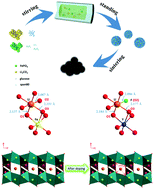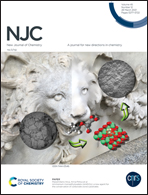Y–F co-doping behavior of LiFePO4/C nanocomposites for high-rate lithium-ion batteries†
Abstract
Lithium iron phosphate (LFP) has become one of the current mainstream cathode materials due to its high safety and low price. Most modification methods applied (e.g. ion doping, carbon coating and particle size restriction) are used to overcome its poor electronic and ionic conductivity. Here, the Y–F co-doped LFP/carbon (LFP/C) precursor was successfully synthesized using a high temperature solid phase method. The electronic conductivity of the material is enhanced by doping with F which induces the rearrangement of the PO43+ electron cloud, while the doping with Y introduces Li+ vacancies, thereby reducing the space resistance of Li ion diffusion, resulting in an overall enhancement of the ionic conductivity of the material. In addition, XRD refinement results show that Y and F doping leads to a weakening of the Li–O bond while also widening the lithium ion diffusion tunnel, thereby increasing the lithium ion diffusion rate. Therefore, this work has produced LFP/C-YF-2, which exhibits an ultra-high discharge specific capacity of 135.8 mAh g−1 at 10C, and a discharge specific capacity of 148.6 mA h g−1 without attenuation after 700 cycles at 5C. It is hoped that this high-capacity and high-rate cycling stability material will become a promising cathode material for applications in high-power electric vehicles and other equipment.



 Please wait while we load your content...
Please wait while we load your content...